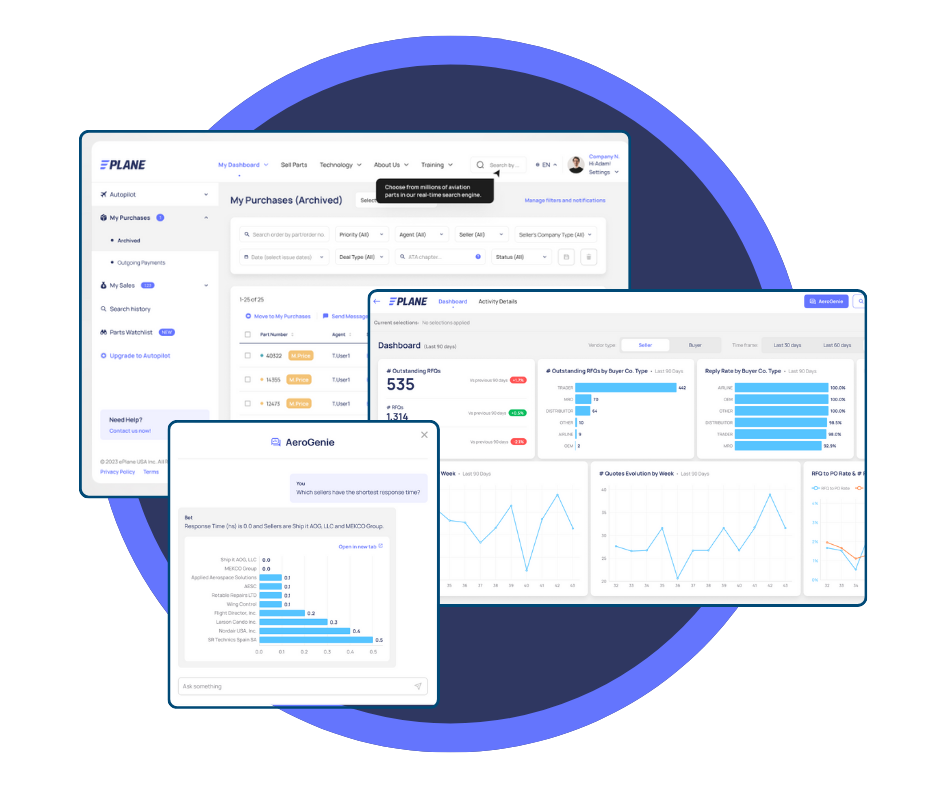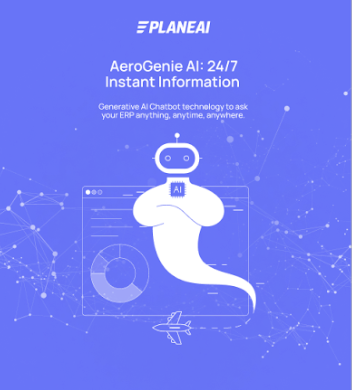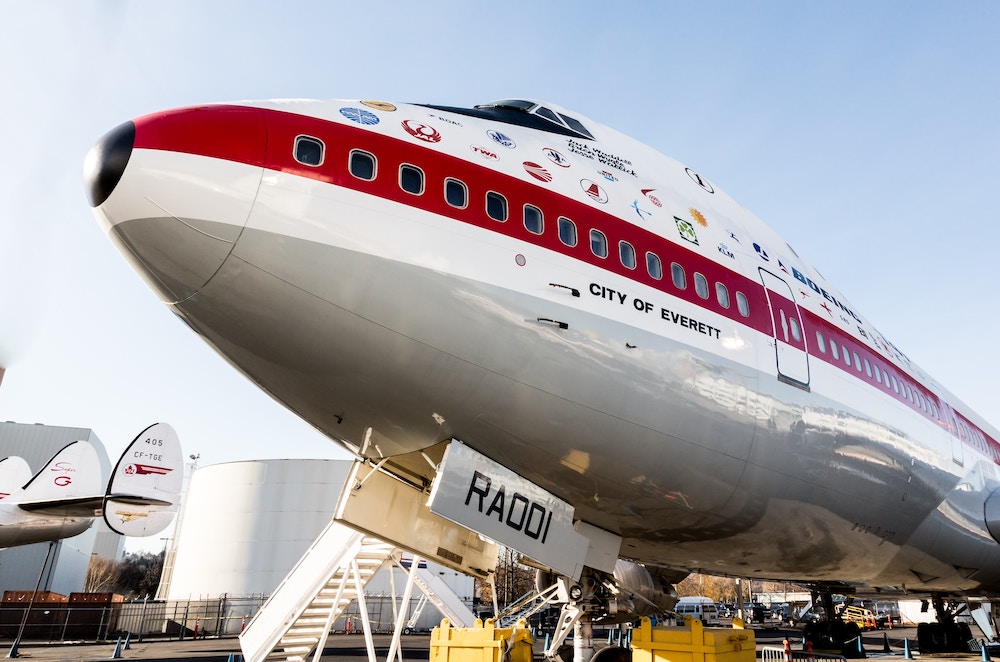
Both remarkable advancements in technology and misconceptions have fueled the recent hype surrounding artificial intelligence (AI). Innovations in generative AI have captured the most attention, as these technologies enhance productivity for developers and knowledge workers. They are pushing the boundaries of content discovery, creation, authenticity, and regulations. Additionally, generative AI can automate human tasks and improve customer and employee experiences. As a result, many misconceptions have emerged, assuming AI is just like human intelligence, that it will replace all human jobs, and the list goes on and on. All in all, these misconceptions have developed because of the lack of understanding of what AI can already do and its future potential.
It is important to understand that AI has been around for years and the foundational computer sciences behind it, such as machine learning, have been utilized by industries for decades. However, in recent years AI has made great strides in developing prediction models. This is especially apparent in the area of maintenance within the aviation industry. For example, predictive maintenance has helped aircraft operators lower their maintenance costs, prolong equipment life, reduce aircraft downtime, boost production capacity, and enhance safety. As a result, it has allowed operators to assess better the needs of aircraft parts in materials procurement and inventory management, which is the focal point of this article.
The Role of Machine Learning in AI
Before we dive into the role of AI in buying and selling aircraft parts, it is important to understand the difference between machine learning and AI because it is machine learning, not AI, that is making the most impact on aviation operations. Therefore, this article will refer to how the aviation industry is embracing AI in the context of machine learning and predictive modelling.
AI refers to the broader concept of creating machines or systems that can exhibit human-like intelligence, including tasks such as understanding natural language, reasoning, and problem-solving. Machine learning, on the other hand, is a subset of AI focused on enabling machines to learn from data and improve their performance on specific tasks without being explicitly programmed. Machine learning algorithms utilize patterns and statistical techniques to learn and make predictions or decisions based on data automatically.
The History and Current State of AI in Buying and Selling of Aircraft Parts
The buying and selling of aircraft parts is big business. It is, in fact, a multibillion-dollar industry that affects every commercial flight worldwide. Therefore, without a steady supply chain of aircraft parts and materials, any aircraft fleet has the potential to go nowhere.
Aircraft parts buyers in the aerospace supply chain process can be categorized into several groups based on their roles and needs. They include airlines and aircraft operators, maintenance, repair, and overhaul (MRO) facilities, original equipment manufacturers (OEMs), distributors and resellers, etc.
On the supplier side, there are three primary aircraft part supplier tiers, and each one plays a different, yet significant role in the overall supply chain system:
- Tier 1 suppliers provide major aircraft components such as engines, landing gear, wings, and the fuselage.
- Tier 2 suppliers provide parts such as the engine’s mechanical components, wheels and brakes, flight control actuators, and avionics and hydraulics for the fuselage.
- Tier 3 suppliers provide basic products, components, and other non-core value added services such as accessories, bearings, plastic parts and castings, and interior and inflight entertainment.
There are thousands of different suppliers and hundreds of millions of parts and materials available. Therefore, connecting an aircraft with the correct part(s) can sometimes seem impossible.
Aircraft parts buyers and sellers connect through digital marketplaces that streamline the process of acquiring and selling aviation parts. However, a major issue with the current digital marketplaces is that they are antiquated and often very human-dependent. Traditional parts site search engines do not create any narrative that helps users narrow down vendors, systems, subsystems, and specific parts, nor do they help users leverage past purchasing behaviors to understand their individual needs.
As with so many things though, AI is poised to take the aviation market by storm and shake up the business of buying and selling of aircraft parts. With the correct tools, the process of connecting aircraft parts buyers and sellers can be streamlined, increasing efficiency and accuracy, improving supplier relationships, reducing downtime, and enhancing customer support. Let’s explore the future of buying and selling of aircraft parts and the role AI will play in this big business moving forward.
The Future of AI in Buying and Selling of Aircraft Parts
It is not a matter of if but when AI will change and revolutionize the aviation industry. The application of AI in aviation is unavoidable, and this will become even more apparent with the aircraft maintenance technician shortage, the supply chain challenges, and the rapidly changing and evolving environment.
Aviation is a high-speed business, therefore, when an aircraft is grounded, it is losing the company money. However, while mechanical breakages are unavoidable, streamlining and automating data driven processes is not. This is how AI can shine with the implementation of technological advancements, such as:
- AI-powered tools like ePlaneAI
- Predictive analytics
- Conversational analytics
- Airworthiness document analytics
- Predictive maintenance
- Inventory management
AI-Powered Tools in Buying and Selling of Aircraft Parts
AI-powered tools, such as ePlaneAI, can compile market insights from dozens of different third-party resources, integrate the insights with users’ enterprise resource planning (ERP) data, and make data-informed recommendations about inventory numbers and forecasting within mere seconds.
ePlaneAI is a cutting-edge online marketplace and insights platform for aerospace parts and aviation repair services. The platform leverages conversational and generative AI technologies, industry-wide data, and aviation expertise to seamlessly power and connect global sellers and buyers 24/7/365, from search through purchase, to help its users make the best decision every time.
The ePlaneAI design offers its users efficient solutions, whether the user is in the market to buy aircraft parts or looking to optimize their seller inventory. Unlike traditional parts site search engines that simply yield search results consistent with the user’s search parameters or keywords, ePlaneAI paints a more complete picture, providing a solution narrative. The solution narrative allows users to sift through the noise and choose an appropriate solution for their needs. It makes the process of buying and selling of aircraft parts simpler, smoother, faster, and more accurate.

With ePlaneAI, the cumbersome process of manually cutting and pasting for aircraft parts is a thing of the past. ePlaneAI allows its used to enter their parts requirements, and in moments, be presented with a curated list of reliable inventories from globally trusted sellers. ePlaneAI not only saves its users time, but also ensures they get certified aircraft parts at the most competitive prices.
The ePlaneAI results are more than just a list though; they are a gateway to detailed, up-to-date information on actual parts pulled from ERP’s from across the globe. With blockchain technology to track certifications, every detail is just a click away, ensuring the users make an informed decision.
With ePlaneAI’s unique comparison tool, evaluating choices is a breeze. Intricate parts details can be viewed side-by-side, ensuring the users always make the most informed decisions. As a result, users can enhance the efficiency of their procurement process with insights that truly matter.
Predictive Analytics in Buying and Selling of Aircraft Parts
The aviation industry relies on a vast supply chain of parts, ranging from small hardware to complete components. With thousands of vendors and millions of different parts, finding the right match can be daunting and time-consuming. This is where predictive analytics can be utilized by leveraging historical data and advanced algorithms to anticipate future outcomes. Tools, such as ePlaneAI, that utilize AI-driven predictive analytics can significantly simplify their users’ processes by:
- Understanding user preferences. Unlike traditional search functions, AI technologies consider user preferences and provide a comprehensive solution narrative.
- Narrowing down vendors. AI technologies help users sift through noise, narrowing down vendors, systems, subsystems, and specific parts.
- Leveraging past behavior. By analyzing past purchasing behavior, AI technologies tailor recommendations to the users’ individual needs.
- Improving speed and accuracy. AI technologies streamline the process of buying and selling of aircraft parts by making it faster and more accurate for its users.
Predictive analytics can empower aviation professionals to make informed decisions, streamline processes, and ensure smoother operations in the dynamic world of buying and selling of aircraft parts.
Conversational Analytics in Buying and Selling of Aircraft Parts
Data without insight brings no value, and yet combing through spreadsheets can be both daunting and time-consuming. Tools, such as ePlaneAI, can parse raw data to extract important takeaways with easy-to-digest technology so its users and their leadership teams can easily make informed strategic decisions.
Users can take advantage of the platform’s chat feature to ask questions based on the users’ own performance data, and ePlaneAI can evaluate the users’ own key performance indicators (KPIs) combined with industry-wide market data to respond with clear, actionable insights.

Users can even give ePlaneAI a call. Its Voice AI can address user requirements, from part searches to availability checks. The transition from voice-to-chat is also available by initiating a conversation over the phone and effortlessly switching to chat, picking up right where the user left off. Users can navigate complex queries and achieve solutions in real-time, without waiting on hold or navigating through tedious interactive voice response (IVR) systems.
ePlaneAI’s AI Chat JET is available 24/7 on various platforms, like Viber, WhatsApp, Apple Messaging, Google, and more. Whether users are looking to search for parts, submit requests for quotes (RFQs), or search for a response to their question(s), the AI chatbot can ensure smooth and efficient interactions in 8 languages across the globe.
Airworthiness Documents Analytics in Buying and Selling of Aircraft Parts
When purchasing or selling aircraft parts, it is essential to have proper documentation to verify their airworthiness. These documents serve as evidence that the parts meet safety and quality standards.
AI-enabled tools helps aviation part buyers and sellers elevate their interaction with key airworthiness documents. Information can be translated, pulled, and reported from user documents without pouring through mountains of PDFs. The data can then be integrated with the users’ sales, maintenance planning, and company reporting teams. Furthermore, falsified, or missing documents can be quickly stopped in their tracks.
ePlaneAI can also process, categorize, and deliver on-demand data, allowing its users to navigate the intricate regulatory landscape with ease. Furthermore, users can move past long-winded document searches by posing queries and receiving precise, context-aware answers from ePlaneAI’s Document AI.
Predictive Maintenance in Buying and Selling of Aircraft Parts
It is estimated that nearly 30% of aviation delays are caused by unplanned maintenance. AI-enabled Predictive maintenance greatly reduces the overall burden of extended unplanned maintenance downtime. Predictive maintenance technologies monitor fleet health, including every system and subsystem, while highlighting common failure points.
Once the failure points are identified, a thorough output of information is provided, allowing aircraft maintenance technicians to diagnose issues and quickly determine the necessary parts. This, in turn, reduces the aircraft downtime because of the predictive diagnosis and proactive approach to aircraft parts procurement.
The primary goal of predictive maintenance is to anticipate and prevent equipment failures or issues before they occur. Its implementation in maintenance techniques can result in:
- Cost reduction. By identifying potential problems early, aircraft operators and maintenance organizations can avoid costly unplanned maintenance events.
- Increased reliability. Predictive maintenance helps improve aircraft reliability by minimizing disruptions to flight schedules.
- Optimized inventory management. Knowing when parts are likely to fail allows for better planning of spare parts inventory.
Inventory Management in Buying and Selling of Aircraft Parts
In the dynamic world of aviation and aerospace, inventory management can be a daunting and complicated task. With unpredictable schedules, strict compliance regulations, complex and multi-component inventory stocks/stores, and an ever-changing environment, it is easy to see why efficient inventory management can make or break an aviation company.
The goal of aviation inventory management is to anticipate supply chain disruptions, better forecast market demand and price fluctuations, and support overall smooth operations. With tools, such as ePlaneAI’s Hybrid Cloud inventory management feature, users can experience a bird’s-eye view of stock levels with click through to detail, ensuring nothing slips through the inventory management cracks.
Next Steps in Leveraging AI for Buying and Selling of Aircraft Parts
The application of AI technologies in buying and selling of aircraft parts will be unavoidable soon, which will become even more apparent with some significant changes affecting the aviation industry, such as the aircraft maintenance technician shortage, supply chain challenges, and the rapidly changing and evolving environment.
Implementing AI technologies can be a big undertaking, and great barriers come with great advancements. However, if aerospace supply chain members are willing to make the initial investments in hardware, software, expertise, and staff training, they will be able to reap the long-term benefits of AI technologies.
By Katarzyna Szwed-Carlson
Kasia Szwed-Carlson is an expert in the aviation industry with 15 years of experience working in flight operations management and training leadership roles.



